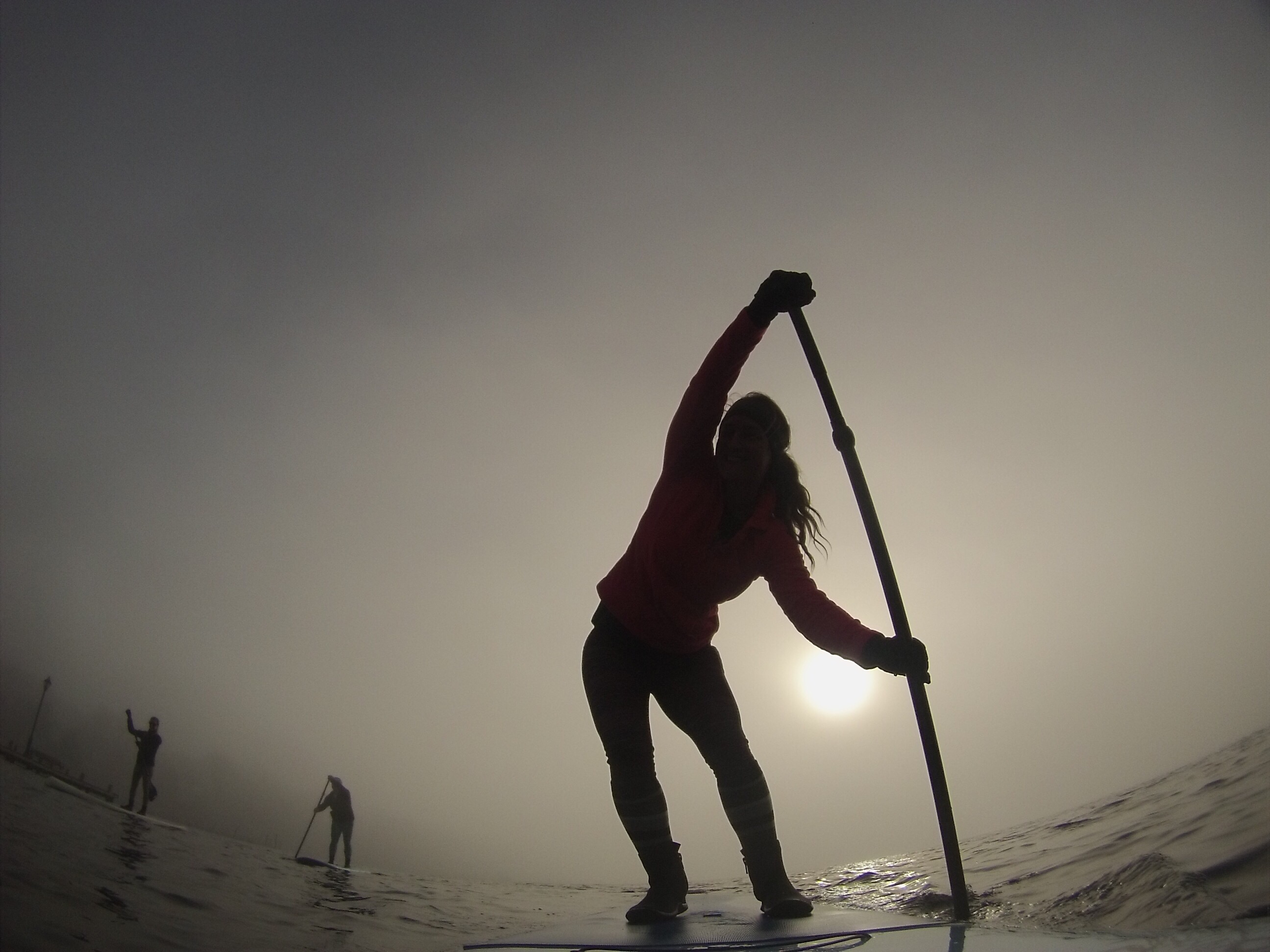Living in New Jersey the winter can be very LONG. Once December rolls around, it’s usually cold until April. We’ve gotten lucky with some unseasonably warm temperatures in February which has given us a little taste that summer is out there – somewhere.
Paddling in the winter has its benefits, but you don’t want to be caught unprepared when you are on the water and there aren’t other people around if something goes wrong. Here are our tips for a successful winter paddling session:
- Try to go with a friend – or a tribe like the mermaids. It obviously makes it more fun, but more importantly, there is safety in numbers. In the summer there are boaters, kayakers, other paddlers out there and people outside their homes who could help you, but in winter – it’s quiet out there (which is awesome) and the water is dangerously cold if you fall in far away from your launch site (which is not so awesome). If you are going solo or with just one other person – have a Float Plan. Tell someone where you will be and what time you expect to be back on land – this way they can send out help if they don’t hear from you.

2. Proper attire. We frequently paddle after an early morning run on the weekends, so we wear the same thing we had on for the run. We change our sneakers and slip on wet suit booties. I like to keep my socks on and use gallon size Ziploc bags between my socks and the booties for extra dryness and warmth. Booties come in different thicknesses and toe styles. We prefer rounded toe because it is easier to get your socks and bags to fit comfortably. 3mm gets you through October and November and maybe into December, 5mm works in December and March & April, but you really need 7mm if you plan to be on the water in January and February. Here are some links to affordable options: (note – we are not sponsored by any brands, so these are based on first hand use or Amazon reviews)
I also like to wear a vest out on the water because I can keep gloves and a hat in the pockets in case the wind picks up or if I get too hot and want to start taking off the extra gear. Even if you don’t think you will need gloves out there, BRING THEM! Your fingers get cold fast, and if you end up paddling for more than 45 minutes, you will be happy you have the gloves.

3. Hydration. I’m not always great about bringing water out with me – especially in the winter since it’s not hot. As I start training more for racing season, I know this will have to change. I bought this hydration pack for running in the Florida Keys (because the heat and humidity down there make me need water every mile), but I have brought it out paddling the last few times and I am loving it. I fill up one of the bottles, and in the other bottle slot I put my Go Pro. I also can fit my car key and phone in the zipper pouch so I don’t need to bring my dry bag and everything is within reach. (I don’t recommend bringing your phone in it unless you have a Lifeproof or waterproof case and something to keep your phone floating – see previous blog post). For races, I use a Dolfin Hydration pack, but for training and social paddling, this hydration belt pack is great.

4. Lastly, bring a Go Pro, or your phone in a floating waterproof holder. You will want to capture some of the best sunsets and flat water conditions the winter has to offer.
Let me know what else I forgot in the comments below.
Paddle on ❤ , Carly



You need to leave a “float plan” Giving a float plan to a responsible person or friend is just as important for a SUP trip as it is for a motorboat.
Also, like canoes/kayaks, people on SUPs often travel in secluded or scenic sections of lakes or ponds where there may not be other people around to help. (redcross.org)
LikeLike
Very smart! Thanks Mom 🙂
LikeLike